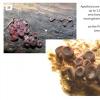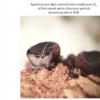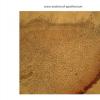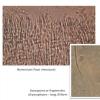
17-08-2011 22:51
 Alex Akulov
Alex Akulov
Dear Friends During my recent trip to the Carpath

14-08-2011 17:47
 Alex Akulov
Alex Akulov
Dear FriendsYesterday ended my second in this year

12-08-2011 14:54
roman vargas albertoHello, Do you know if the Peziza arvernensis has i

04-08-2011 04:52
Roland LabbéBonjour !Voici une planche d'un Disco carbonicole

04-08-2011 15:12
Marja PennanenHello forum,when studying Perichaena I noticed som
 Dear Friends
Dear FriendsDuring my recent trip to the Carpathians, I often meet a small violet discomycete on the Picea abies wood. Given how much often it had met, I think it's something trivial.
As for me, when fresh apothecia are similar with young Ascocoryne. But it is significant that cross section of dry apothecia is almost white and the texture of dry fruit bodies is very hard. Ascospores probably are filiform.
Do you have some idea, what it would be?
Grateful before,
Alex

could be young Ascocoryne cylichnium, which is only slightly gelatonous.
But this should possess crystals in the medulla and also on the exterior, I assume already when immature. Maybe you will see the crystals under higher magnification. The apos show a whitish powder on your photo, so these might be due to crystals.
Zotto

Thank you, Zotto
I found some more mature specimens, collected diring same expedition.
Its really looks like Ascocoryne cylichnium.
Alex




